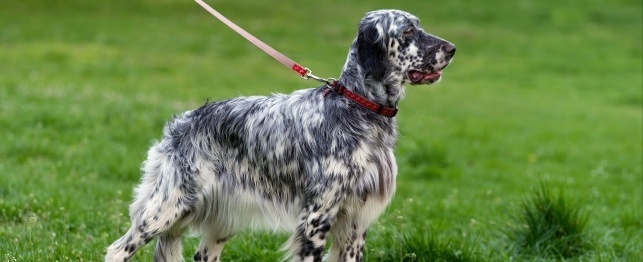
What Exactly is OA?
OA, or degenerative joint disease, is the painful degradation of the cartilage that lines the ends of bones inside joints. Signs include walking slower or more stiffly, pain when touched in certain areas, or showing discomfort or hesitance to get up, jump, run, or climb stairs.
Osteoarthritis (OA) is a leading cause of disability, pain, decreased quality of life, and euthanasia in dogs. An estimated 20 percent of dogs over one year of age have OA, which corresponds to approximately 10 million dogs in the United States alone.
Who’s At Risk?
Large-breed dogs such as German Shepherds, Golden Retrievers, and Labrador Retrievers are diagnosed with OA more frequently than smaller and/or mixed-breed dogs. This does not mean that small dogs are not at risk for OA, however—athleticism and obesity also contribute to the development of OA regardless of breed and size.
Small but Mighty (Athletic)
Athletic dogs are often more commonly diagnosed with OA due to the increased occurrence of injuries to musculoskeletal tissues and general “wear and tear.” Although large breeds are mainly at risk, the truth is that any dog can develop OA.
Small dogs can:
In a nutshell, there are two main ways that OA can occur: either abnormal forces placed on a normal joint (e.g., following injury) or normal forces placed on an abnormal joint (e.g., poor conformation). Regardless of the inciting cause, inflammation in the joint ensues, initiating a cascade of events that results in OA.
Are They Really “Small?”
Obesity is also an important risk factor for OA regardless of breed. Current estimates suggest that approximately 50 percent of all dogs are overweight or obese. Excess body weight has a negative impact on joint health due to the increased stress on bones and joints. Many small breeds, such as Yorkshire Terriers, are generally able to maintain appropriate body weights even when fed free choice (like Greyhounds). Other small dogs have a greater tendency to gain weight, including Dachshunds, Scottish Terriers, and Cavalier King Charles Spaniels.
One reason that some small dogs are overweight/obese is because many are not routinely exercised. It is not unheard of to litter box train small- and toy-breed dogs instead of walking them outdoors. Regular exercise is advocated both for weight loss/management and musculoskeletal health. Walking and other forms of regular, controlled exercise are recommended for all dogs, no matter how small they are. Another contributor to canine obesity is over-nutrition on the owner’s part. Owners are encouraged to follow a diet recommended by their veterinarian. Recall that a mere 1.5 extra pounds on a 10-pound dog will result in the dog being classified as obese.
No Magic Cure
There is no cure for OA. Therefore, once a dog is diagnosed, medical management is the only option to slow the progressive destruction of the joint. A multi-modal approach is currently recommended for patients with OA, including:
Common ingredients in popular joint health supplements include glucosamine and chondroitin sulfate. It has been shown that certain brands don’t meet label claim (don’t contain ingredients in the amounts listed on the label), so choose a well-known brand formulated for dogs that has been shown to be safe and effective. Your veterinarian can help you choose the best product for your pet.
Some companies are producing products targeted to meet the special needs of small dogs. These include small soft chews, which are tasty, easier to administer than other chewable tablets designed for larger breeds, and formulated with oral concerns of small dogs in mind, including dental disease (tartar, cavities), under- or overbites, and missing/malpositioned teeth.
So even though there is no magic cure, joint health supplements can play a part in helping to protect and support joint health in your dog, whether your dog is small or large. Talk with your veterinarian today.
This is an advertorial article provided by Cosequin.
 Homemade Dog Diapers
Homemade Dog Diapers
Homemade Dog Diap
Homemade Dog Diapers
Homemade Dog Diapers
Homemade Dog Diap
 What Your 16-Week-old Puppy Needs
What Your 16-Week-old Puppy Needs
What Your 16-Week-old Puppy Needs
What Your 16-Week-old Puppy Needs
 Lyme Disease in Dogs Symptoms To Watch Out For
Early
Lyme Disease in Dogs Symptoms To Watch Out For
Early
 Protecting Your Dog During Hunting Season
Protecting Your Dog During Hunting Season
Protecting Your Dog During Hunting Season
Protecting Your Dog During Hunting Season
 Kennel Cough Symptoms, Treatment, and Prevention
What Is Kennel Cough?
Kennel Cough
Kennel Cough Symptoms, Treatment, and Prevention
What Is Kennel Cough?
Kennel Cough
Copyright © 2005-2016 Pet Information All Rights Reserved
Contact us: www162date@outlook.com